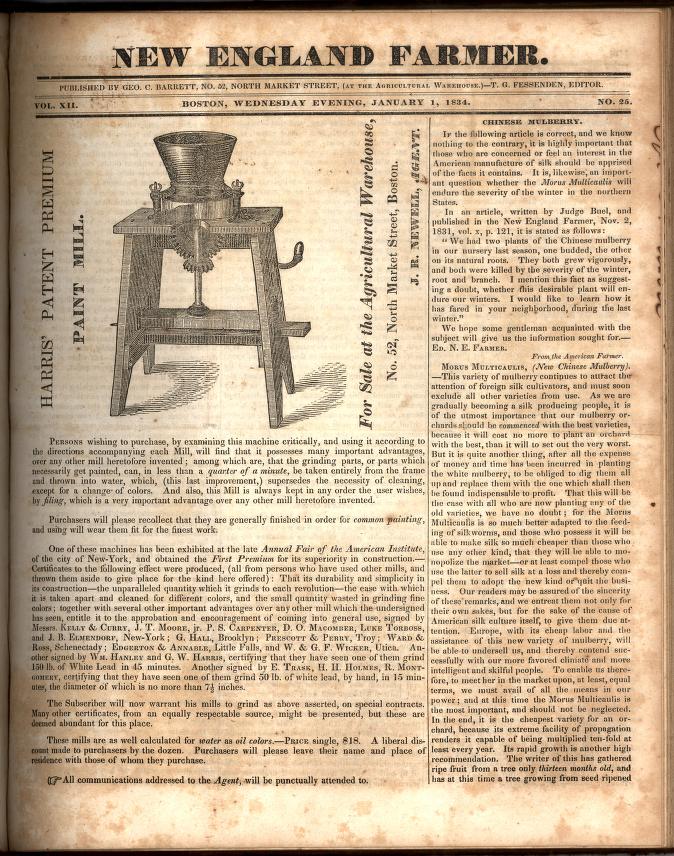




Advanced Search
| Online Collection |
|
||||||||||||||||||||
|
The correspondent in the "Chinese Mulberry" column asks if others had experienced what he had, a problem that would be a crucial concern of America's ultimately unsuccessful mulberry tree growers: could mulberry trees, the only food silkworms ate, survive in the northeastern United States? The paper's response is confident: the traditional varieties could not, but a newly imported mulberry tree species, Morus multicaulis, would survive. And compared to the ordinary mulberry it was remarkably robust. But in the early 1840s a series of unusually cold winters overwhelmed the thousands of trees speculators had planted in America. In the years following what few survivors remained were finished off by a blight. But obtaining the correct trees was just one major concern for this potentially lucrative industry. Another major question was how to manage the sensitive silkworms, a topic addressed in "Persian Management." In publications of the era various methods were examined to handle the challenge of keeping silkworms free from disease, fed, and willing to spin the silk-bearing cocoons. Due to a number of problems though, these goals were difficult to achieve. The worms died either from diseases due to congested conditions, poor quality food, problems maintaining an even temperature, or a combination of these factors.
|
"Chinese Mulberry" and "Persian Management of Silkworms from New England Farmer"
|
| |
Home | Online Collection | Things
To Do | Turns
Exhibit | Classroom | Chronologies | My
Collection
About This Site | Site Index | Site Search | Feedback


